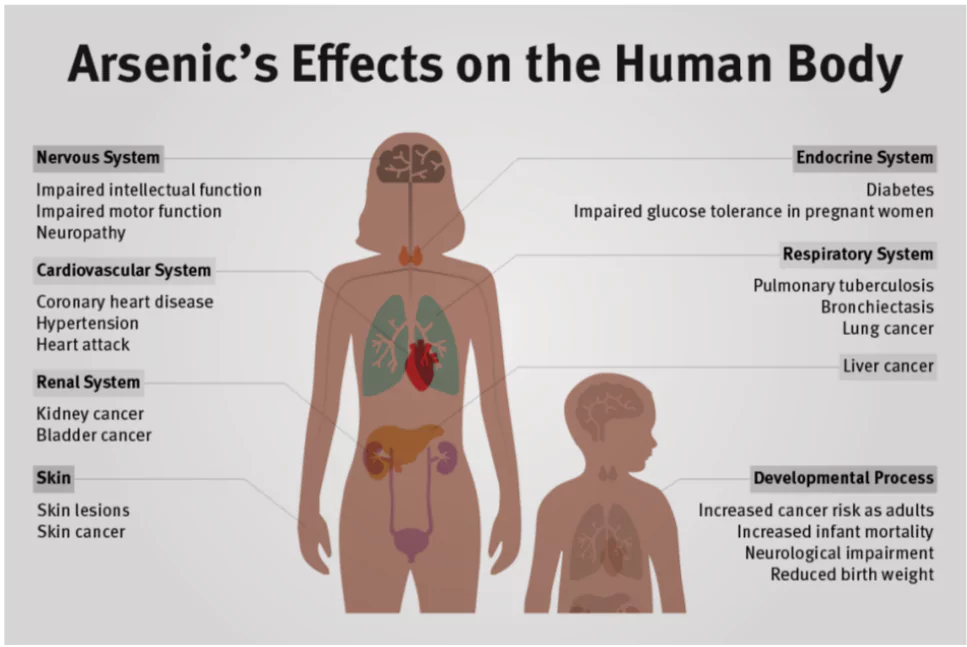Researchers at the Indian Institute of Science (IISc) have developed a new three-step process to remove heavy metal contaminants, such as arsenic, from groundwater.
- IISc researchers collaborate with NGOs, including the INREM Foundation and Earthwatch, to test and deploy these systems in rural areas like Bhagalpur in Bihar and Chickballapur in Karnataka.
Allowable Limits for Arsenic and Fluoride in Water (WHO)
Arsenic in Drinking Water
- The safe limit for arsenic in drinking water is 10 parts per billion (ppb).
- This guideline helps ensure safe consumption and reduces health risks from long-term exposure.
Fluoride in Drinking Water
- The World Health Organization (WHO) recommends a provisional limit of 1.0 milligram per kilogram (mg/kg) for fluoride in drinking water.
Arsenic in Agricultural Water
- For water used in agriculture, the allowable limit for arsenic is 0.10 milligrams per liter (mg/l).
|
About IISc new method
- The IISc new method is designed to remove heavy contaminants from groundwater.
- It not only removes arsenic but also guarantees safe and sustainable disposal of the contaminants.
Enroll now for UPSC Online Course
Heavy Metals
- It is defined as the metallic elements with high density compared to water.
- It comprises metalloids like arsenic.
- The toxicity due to heavy metal is very challenging as it is soluble in water and easily absorbed by living organisms
- Examples: Iron, copper, tin, and precious metals such as silver, gold, and platinum
|

-
- Further, It prevents them from re-entering the groundwater system.
- This comprehensive approach addresses a major gap in existing arsenic removal technologies.
- Three processes are:
- Adsorption: Separating arsenic from water using a biodegradable absorbent.
- Bioremediation: Reducing pollutant concentration.
- Environmentally Friendly Disposal: Ensuring safe disposal of removed heavy metals.

Contamination Status in India
- Arsenic levels: Reports indicate 113 districts in 21 Indian states have arsenic levels above 0.01 mg per liter.
- Fluoride levels: Additionally, 223 districts in 23 states have fluoride levels exceeding 1.5 mg per liter.
- These levels are above the permissible limits set by the Bureau of Indian Standards and the World Health Organization (WHO), posing health risks.
Check Out UPSC Modules From PW Store
![]() 12 Jun 2024
12 Jun 2024


